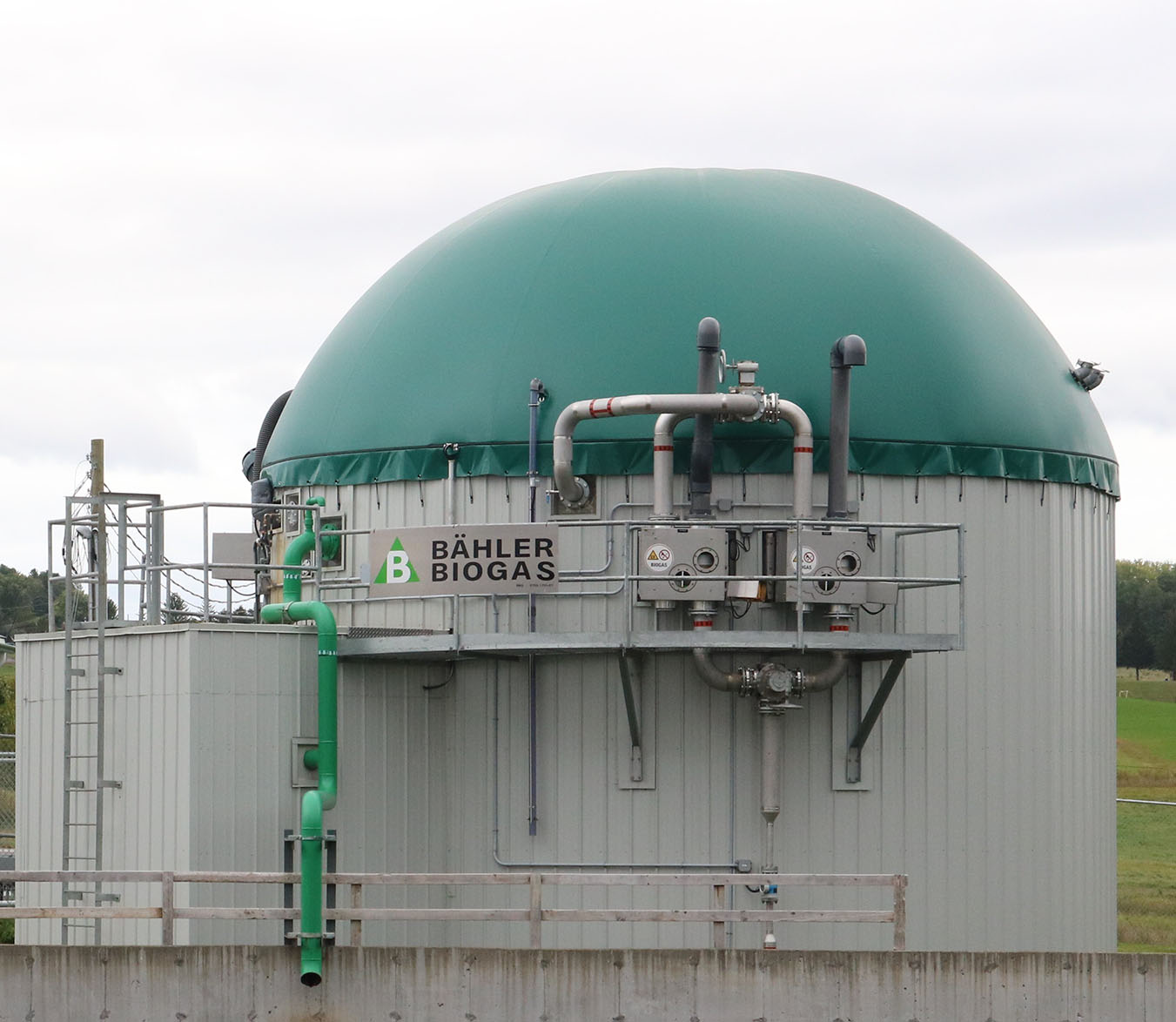Set up an interview
Media Relations
Agriculture and Agri-Food Canada
1-866-345-7972
aafc.mediarelations-relationsmedias.aac@agr.gc.ca
As ecological approaches to reduce the impact of human activities on the environment multiply, Agriculture and Agri-Food Canada’s (AAFC) Research and Development Centre in Sherbrooke, Quebec, continues to innovate in this area.
Scientists are expanding the vast experience of the Sherbrooke Research and Development Centre in the valorization of manure and slurry through the Livestock waste technology research platform. It is supported by a new biomethanation plant, called a biodigester, which uses micro-organisms, such as bacteria, to break down and ferment organic matter.
Their main objective is to create the best possible processes, perfectly adapted to the needs of a medium-sized dairy or pig farm, to convert manure, slurry and other agricultural residues into bioenergy and bioproducts of high economic value.
Biodigester in action
During a biomethanation process, communities of micro-organisms, such as bacteria, work together to digest and convert livestock waste (slurry, manure and other agricultural residues) into new reusable components.
The operation of the biodigester at the AAFC Research and Development Centre in Sherbrooke is unique. Biomethanation, which takes place at low temperatures (20°C to 25°C), is based on the activity of so-called anaerobic bacteria because they break down organic matter in the absence of oxygen.
Different families of anaerobic bacteria are activated in turn during the biomethanation process.
- Some bacteria start fermentation by digesting solid particles (proteins, fats and sugars), which emits volatile compounds responsible for odours.
- Other bacteria then feed on the volatile compounds, which produces acetate (commonly known as vinegar).
- To complete biomethanation, two types of specialized bacteria work together to produce biogas, including methane.
Scientists in action
As part of the Livestock waste technology research platform, researchers with complementary expertise and their teams are sharing their knowledge and technological tools to meet the following objectives:
- Learn how to carry out the optimal biodigestion of manure, slurry and agricultural residues. The methods used should maximize biogas (methane) for recovery, generate bioproducts of high economic value, reduce odours and, as far as possible, eliminate disease-causing pathogens.
- Explore various ways to reuse and valorize each of the bioproducts resulting from biodigestion.
- Conduct economic analyses on the commercial viability of a biodigester and develop tools to assess the monetary value of bioproducts and the environmental impact of this type of facility.
When research is more advanced and transferred to livestock production sectors, the results can help farmers make an informed decision about implementing a biodigester on their farm.
Many advantages
An anaerobic biodigester makes it possible to create three types of bioproducts with an attractive economic value:
- Biogas (methane) recovered to produce electricity or reused on the farm as a heat source
- Highly fertilizing liquids low in phosphorus, such as fertilizer to be spread on farmland
- Solid residues to be used either as fertilizing material or animal bedding
Another advantage is that it reduces the methane emitted into the environment by valorizing it as a source of biogas. It also reduces a large percentage of the bad odours during the application of the digestate (name given to the residues of the biomethanation process). The fact that it operates at low temperatures requires less external energy inputs to maintain the operating temperature than other biomethanation processes. Lastly, this biodigester is effective in converting various types of effluents, such as those from pig, cow or poultry farms, as well as residual materials from agri-food companies.
The findings of this research platform can potentially make a significant difference in the future. Medium-sized farms could improve their ecological footprint by decreasing the emission of a greenhouse gas (methane) from their farms, while receiving economic benefits in return. This is a great example of AAFC science helping Canada's agricultural sector contribute to climate change mitigation.
Key Discoveries/Benefits
- Agriculture and Agri-Food Canada researchers in Sherbrooke, Quebec, are working together to develop the best possible processes to convert manure, slurry and other agricultural residues into bioenergy and bioproducts of high economic value.
- The high-tech biodigester used by researchers for biomethanation is unique. It operates at low temperatures (20°C to 25°C) and relies on the activity of so-called anaerobic bacteria, which break down organic matter in the absence of oxygen.
- The biodigester makes it possible to create three types of bioproducts: biogas (methane) as a source of electricity or heat, highly fertilizing liquids that can be used as fertilizers, and solid residues useful as fertilizer or animal bedding.
- The findings of the Livestock waste technology research platform could enable medium-sized farms to reduce methane emissions on their farms, while achieving economic benefits.
Photo gallery


The biodigester built at the Sherbrooke Research and Development Centre is unique because it operates at low temperatures (20°C to 25°C). It requires less external energy inputs than other biomethanation processes.